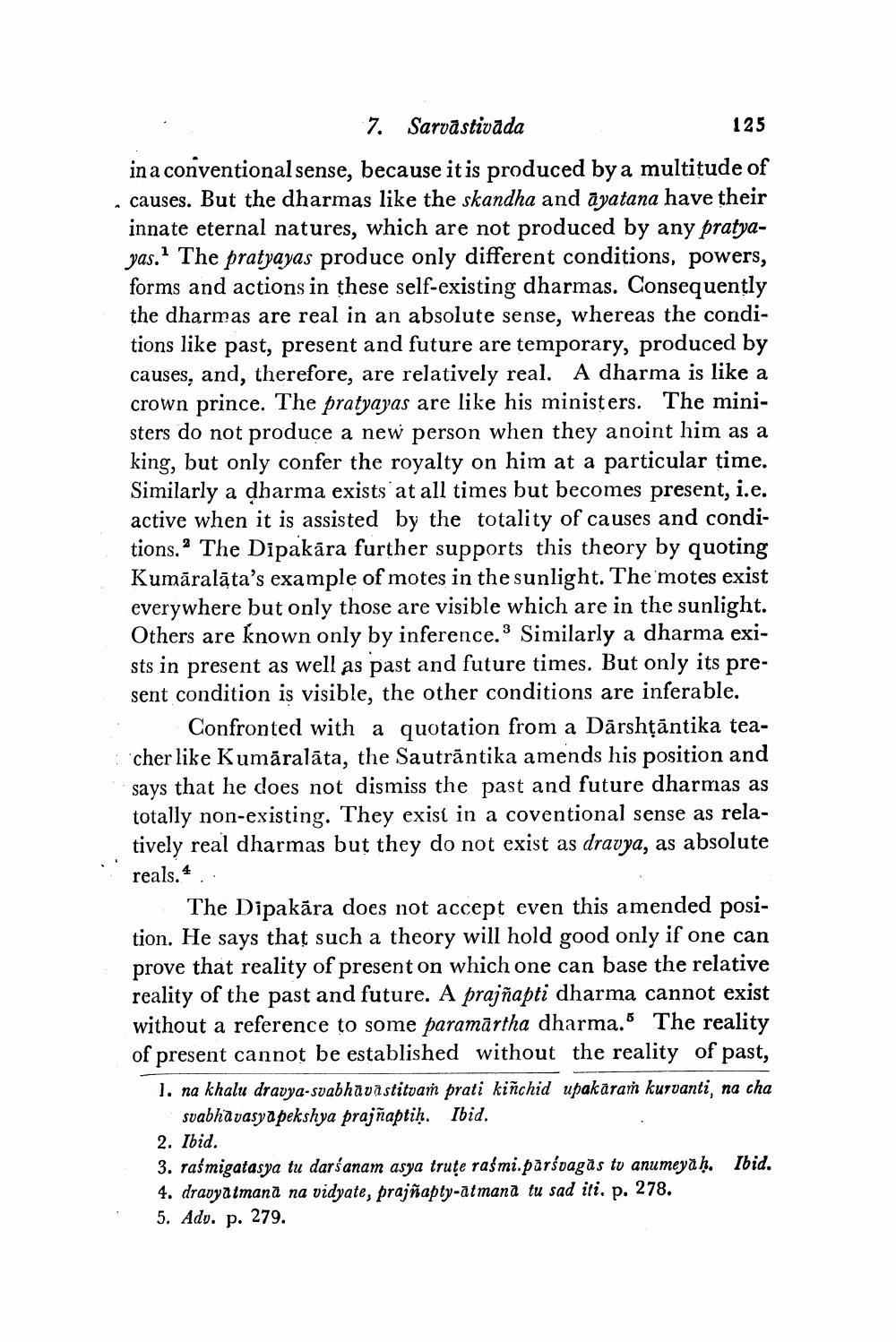________________ 7. Sarva stivada 125 in a conventional sense, because it is produced by a multitude of causes. But the dharmas like the skandha and ayatana have their innate eternal natures, which are not produced by any pratyayas." The pratyayas produce only different conditions, powers, forms and actions in these self-existing dharmas. Consequently the dharmas are real in an absolute sense, whereas the conditions like past, present and future are temporary, produced by causes, and, therefore, are relatively real. A dharma is like a crown prince. The pratyayas are like his ministers. The ministers do not produce a new person when they anoint him as a king, but only confer the royalty on him at a particular time. Similarly a dharma exists at all times but becomes present, i.e. active when it is assisted by the totality of causes and conditions. The Dipakara further supports this theory by quoting Kumaralata's example of motes in the sunlight. The'motes exist everywhere but only those are visible which are in the sunlight. Others are known only by inference. Similarly a dharma exists in present as well as past and future times. But only its present condition is visible, the other conditions are inferable. Confronted with a quotation from a Darshtantika teacher like Kumaralata, the Sautrantika amends his position and says that he does not dismiss the past and future dharmas as totally non-existing. They exist in a coventional sense as relatively real dharmas but they do not exist as dravya, as absolute reals.4. The Dipakara does not accept even this amended position. He says that such a theory will hold good only if one can prove that reality of present on which one can base the relative reality of the past and future. A prajnapti dharma cannot exist without a reference to some paramartha dharma. The reality of present cannot be established without the reality of past, 1. na khalu dravya-svabhava stitvam prati kinchid upakaram kurvanti, na cha svabhavasya pekshya prajnapti". Ibid. 2. Ibid. 3. rasmigatasya tu darsanam asya trute rasmi.parsvagas tv anumeyah. Ibid. 4. dravyatmana na vidyate, prajnapty-atmana tu sad iti, p. 278. 5. Ado. p. 279.




